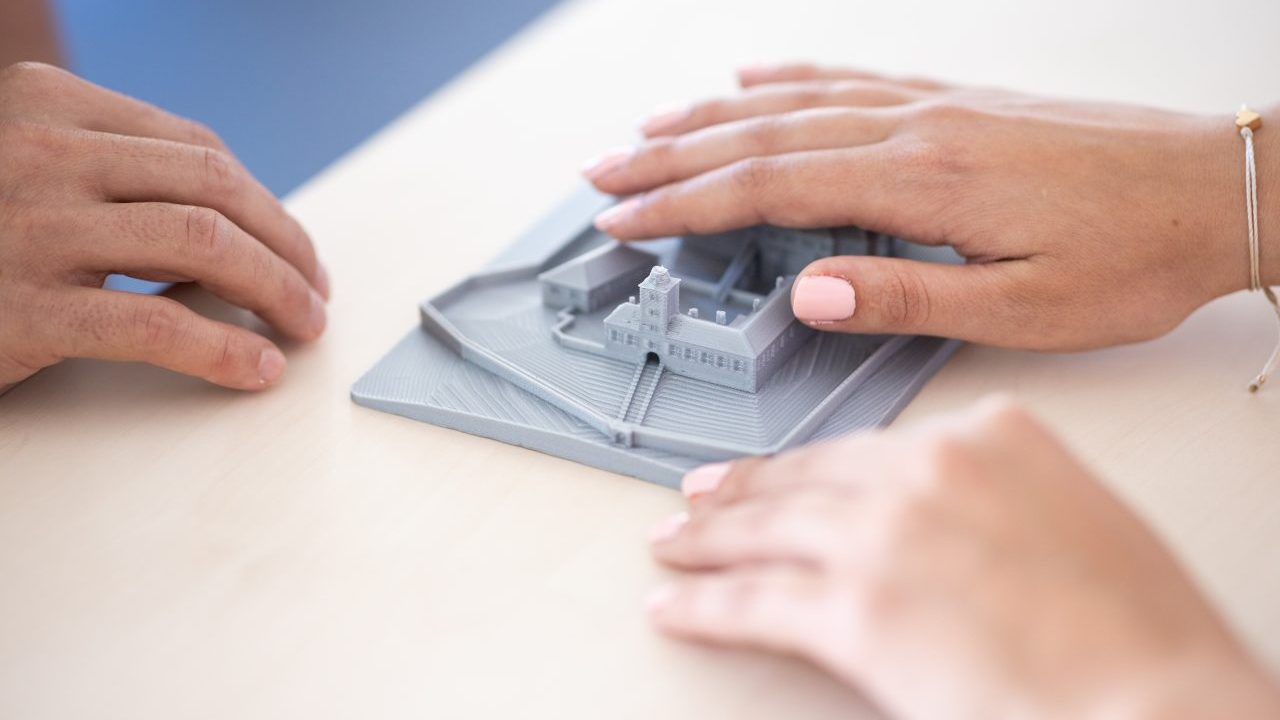
Do blind people enjoy visiting museums? Yes and no. Cheryl Fogle-Hatch and Don Winiecki captured this complicated reality in 2020, when they conducted a survey of blind adults discussing their feelings about museums. Here were a few of the participants’ responses:
“Museums have been a source of knowledge, delight, and profound frustration.”
“Dealing with museums as a blind person requires determination and persistence.”
“Truly positive museum experiences are rare, but they are worth fighting for and they are to be cherished.”
For museum professionals, dissatisfaction like this can be difficult to swallow. We like to think of our institutions as places for respite, learning, and enjoyment. We want our audiences to be challenged and delighted and for our institutions to become cherished within our communities. But are we fulfilling our missions and visions when audiences are leaving frustrated due to the inability to access the information we are presenting? Should positive experiences be a rarity for some parts of our community? Is it equitable for certain audiences to have to work for the same access that others do not? I would hope the answer to these questions would be a resounding no.
Nonetheless, the blind and visually impaired community remains a chronically underserved group in museums, due to a reliance on largely visual exhibition design elements. This dependency on the visual can make content inaccessible to these visitors, who make up an estimated seven million people in the US alone, causing them to feel disappointed or unwelcome.
By integrating the blind perspective into their practices and elevating their accessibility measures, museums can reach wider and more diverse audiences, making negative experiences fewer and further between. But in order for this to be possible, our institutions must first shift away from seeing those who have disabilities as an outlying “problem” that needs a special solution. Instead, we need to think holistically about the interplay between visitors and our environment, across a wide spectrum of ability. When a person with a disability is having trouble within a designed environment, it often means that those without disabilities are too. In that sense, harnessing the perspectives of people with disabilities can reap universal benefits, helping point to limitations in our visitor experience that might be weakening it for everyone.
This effect can be especially potent when applied to blind audiences, since a reliance on visual information is so ingrained in museum practices. To illustrate how museums can transform their work when they integrate this perspective, this post shares examples of institutions that have done so using a variety of techniques, which other museums can emulate for the benefit of all visitors.
Example 1: The Museum of the Gateway Arch
A recent renovation allowed the Museum of the Gateway Arch in St Louis, Missouri, to become a more welcoming environment where all visitors feel they can take ownership of the space. To achieve this outcome, the museum implemented universal design (UD), defined as “the design of products and environments to be usable by all people, to the greatest extent possible, without the need for adaptation or specialized design.” The principles of UD are as follows:
- Equitable use: The design is usable by people with a variety of ability levels.
- Flexibility in use: The design acknowledges a range of abilities and preferences.
- Simple and intuitive use: The design should be easy for anyone to understand, regardless of their prior knowledge.
- Perceptible information: The design communicates necessary information to the individual regardless of their sensory abilities.
- Tolerance for error: The design takes into account that individuals may make mistakes during its use. Employing this principle lessens negative consequences, unintended actions, or hazards during the experience.
- Low physical effort: The design can be used comfortably by anyone with minimal fatigue or difficulty.
- Effective size and space for approach and use: The design is an appropriate size for anyone who may interact with it. This might mean having adjustments for a user’s size, shape, and mobility level.
To employ these principles, exhibition designers at the museum developed multiple means of forming connections with history, allowing visitors to explore through both sight and touch. For example, the museum provides a tactile model of the Gateway Arch and its surrounding grounds, situating visitors with visual and touchable elements representing structures, plants, and walking paths. Another model features a metal buffalo figurine coupled with a piece of mounted fur, so that visitors can understand both the form and texture of the animal. The museum also has plans to incorporate audio guidance in future exhibitions. UD has allowed visitors at the Museum at the Gateway Arch to have a more hands-on learning experience while also crafting a space that is more accessible to visitors with a variety of disabilities, including the blind community.
Example 2: Tiflológico Museum (Museum for the Blind)
Established in 1992, the Tiflológico Museum in Madrid, Spain, aims to serve visually impaired visitors through primarily tactile exhibition elements. It advertises itself as a museum that is meant to be both seen and touched, providing components that align closely with UD principles. This is a major contrast to a typical museum experience, often decorated with “do not touch” signs to deter viewers from handling objects within the galleries. While the space is catered toward blind individuals, all visitors are encouraged to participate in touch-based installations that explore both art and architecture. This includes reproductions of well-known monuments as well as tactile pieces created by blind artists displayed with vibrant colors and raised patterns. In addition to these models, the museum presents devices that have been used by the blind community throughout history, giving sighted viewers an understanding of the assistive technology that is essential for visually impaired users. By centering itself around the blind experience, the Tiflológico Museum has become a unique and interactive space that can be enjoyed by all groups of visitors.
Example 3: The High Museum of Art
An example of an immersive museum experience that draws upon the blind perspective is Outside the Lines at the High Museum of Art in Atlanta, Georgia. Outside the Lines is an immersive maze experience created by Bryony Roberts, an architect, designer, and scholar, and Monica Obinski, the High Museum’s Curator of Decorative Arts and Designs. The designers worked closely with the Center for the Visually Impaired in Atlanta to create the installation, leading them to incorporate a variety of textures and textiles, encouraging all visitors to touch, experience, and play within the maze. While the design is visually intriguing, it does not rely on the visual to engage and immerse visitors. Roberts describes the space as “active, unpredictable, and multi-sensory…crossing the lines that are often drawn between the experiences of people with disabilities and without disabilities, in public space.” With accessibility standards, UD principles, and the blind perspective in mind, museum professionals can create meaningful and inclusive immersive exhibitions similar to Outside the Lines for the enjoyment of all audiences.
Example 4: National Gallery of Prague
Another example of exhibition design informed by the blind experience is the National Gallery Prague’s 2018 Touching Masterpieces exhibition. For Touching Masterpieces, Geometry Prague and NeuroDigital partnered with the museum and the Leontinka Foundation for the blind and visually impaired to transform its best-known sculptures into virtual objects that could be felt through haptic glove technology. When visitors wore them, the gloves vibrated and gave feedback to mimic what it might feel like to run your hands over the artworks. While the project was specifically designed to give blind individuals the most accurate representation of the 3D objects as possible, it created a fuller experience for all visitors, giving them access to a sensory experience they would not otherwise have. As one participant in the exhibition put it in a video published by Geometry Prague:
“Art is not always explainable just by words. The element of touching it and feeling it is missing…reading about it is not the full experience. It shouldn’t be.”
Though this specific technology is not as easily applied to most two-dimensional artworks, there are similar technologies available for translating visual information into tactile equivalents. Likewise, while a virtual reality experience such as this one may not be realistic for every museum, lower-tech alternatives coupled with audio description might have a similar impact.
Conclusion
By acknowledging and embracing the blind perspective, museums and cultural institutions can move towards greater cultural inclusivity while also improving exhibition design and enjoyment for everyone. The case studies within this article use universal design, assistive technology, and virtual reality to create more well-rounded and multi-sensory experiences for all visitors. When design elements are developed to reach beyond sight alone, audiences have the opportunity to participate in more enhanced experiential learning. The experience of blindness can provide a unique and nuanced perspective to the museum environment, enhancing visitor engagement and allowing audiences to develop even deeper connections with the objects and stories found within our exhibition spaces.

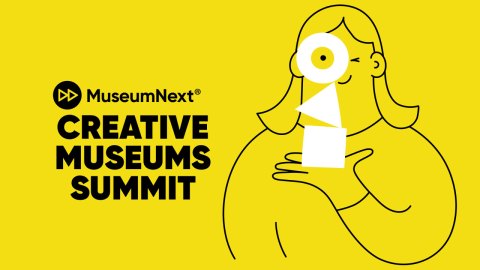

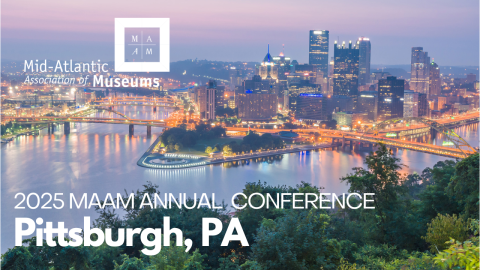


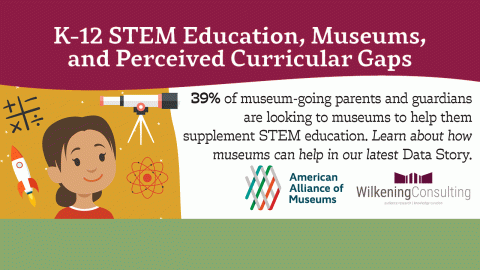

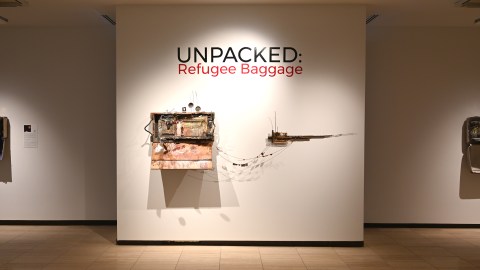
The museum experience for people with low vision should also be a consideration.
Today in a class discussion about the museum experience a student reported that a group of older patrons were cautioned by a security guard for getting too close to the item on display. What they were doing is bending to read the miniscule print label describing the item.
I always ask if there is a handout in large print of labels at an exhibit. Once in a while there, but the answer is usually no.
Seconding this! I have seen some great large print labels at museums around the world. They’re inexpensive to produce and easy to handle, making them perfect for those with low vision and reduced dexterity needs. My favorite method of distribution I’ve seen is a box with laminated printouts so visitors can take them as needed rather than needing to request from staff; by putting these directly in the exhibition space (and not at a desk) it also makes it possible for visitors to choose their own navigation without having to double back.